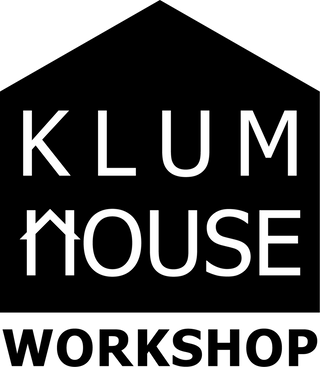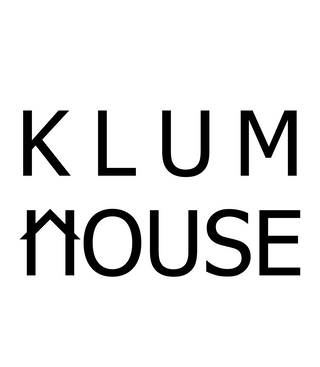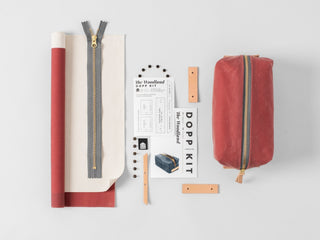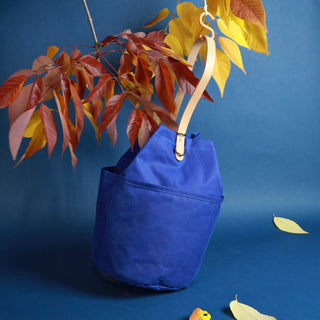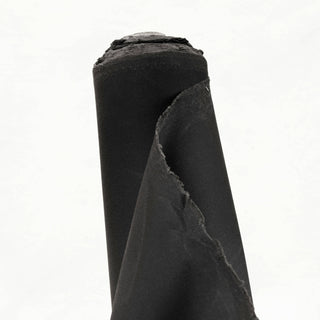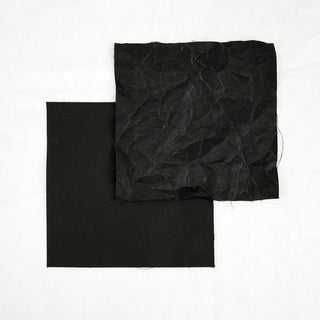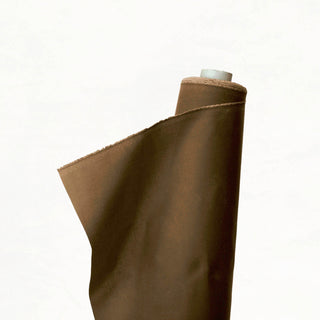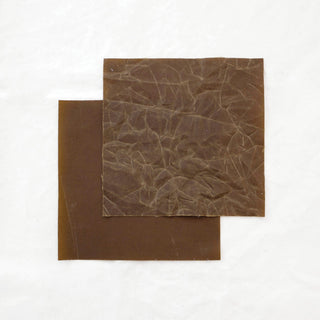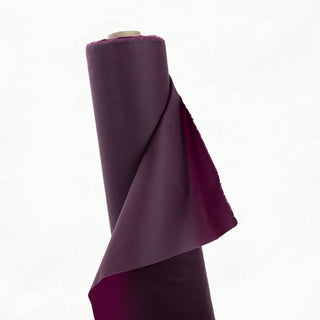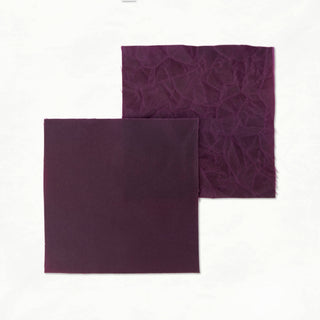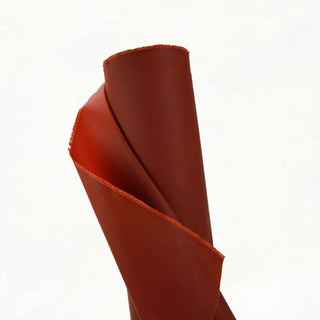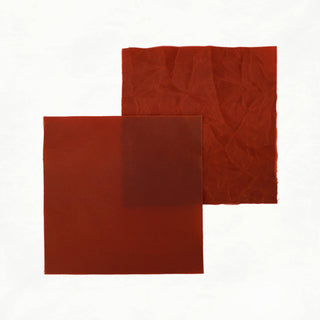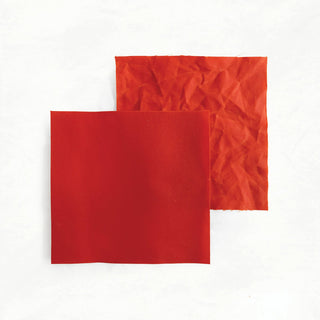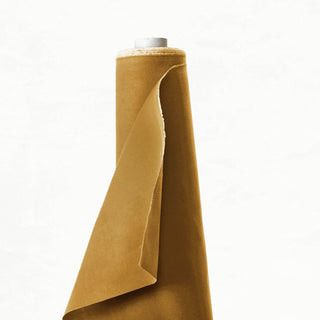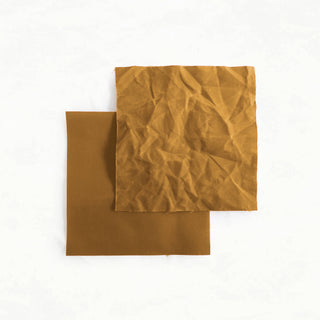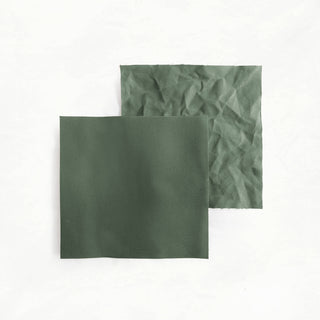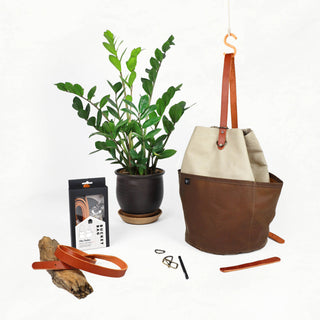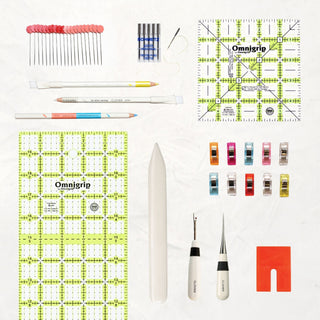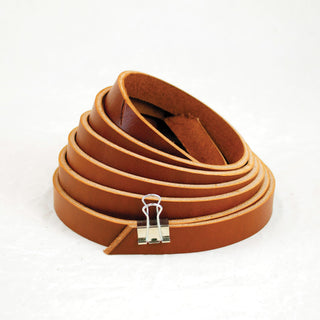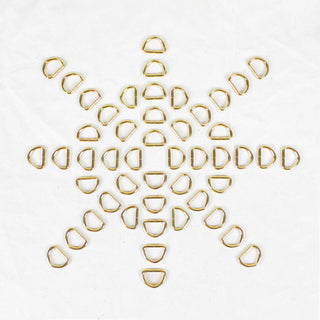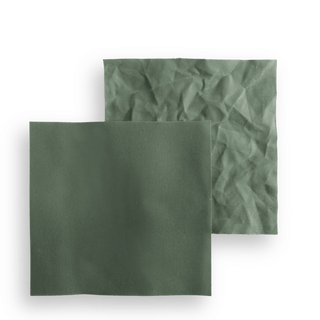
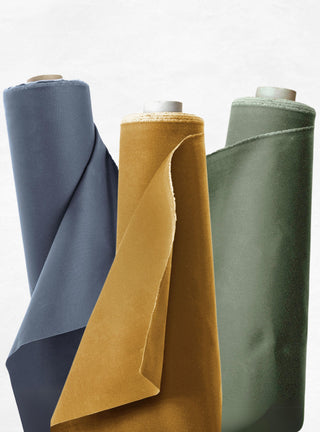
RUGGED, WATER-RESISTANT, AND VERSATILE
Essential Guide to Waxed Canvas
Waxed canvas is an old-school classic that has made a huge comeback in recent years. If you've ever made a bag from a Klum House kit, you know that we are big fans of waxed canvas around here.
This versatile, water-resistant fabric has a unique blend of style, functionality, and durability that makes it a favorite for bag making. The waxy finish helps it stay put at the machine, making it a dream to sew with—not to mention that it develops a beautiful, weathered patina over time.
Classic + Timeless
Waxed canvas is a densely woven cotton canvas that has been saturated with wax, giving it an extra layer of protection against the elements. The waxed coating is made from paraffin or beeswax and records folds and creases. The fabric has a unique texture that gives it a vintage, rustic look. With use, waxed canvas becomes softer and more pliable. This means that over time, a waxed canvas bag or jacket becomes even more comfortable to wear.
At Klum House, our waxed canvas is made from 100% Better Cotton Initiative certified cotton canvas and treated with a unique wax blend of petroleum jelly, mineral oil, and paraffin, resulting in a dryer touch to the fabric than other waxed canvases on the market.
A Well-Earned Reputation
Waxed canvas has been used for centuries in a variety of applications, from military tents and sails to outdoor clothing and accessories. It has long been loved for its natural water resistance and rugged character, and it is widely considered to be the original waterproof textile.
It first became popular in the early 19th century with sailors in England and Scotland. Initially, linseed oil was used for waterproofing, but it caused the fabric to stiffen and yellow. Later, paraffin wax was used, which prevented fabric stiffening and yellowing. In 1894, a British brand called J. Barbour & Sons Ltd began manufacturing waxed canvas for a broader audience. To this day, they are widely known for their waxed cotton jackets.
Modern Applications
Waxed canvas is known for its durability: Its wax coating makes the fabric more resistant to wear and tear. It is ideal for items exposed to moisture or heavy wear, such as bags, tents, jackets, hats, gloves, and other accessories. You can even turn it into a variety of home decor items, such as curtains, pillow covers, and even upholstery.
When choosing a sewing pattern, look for bag, outerwear, and accessory patterns designed for heavy fabrics, such as canvas or denim. Avoid patterns that have a lot of small pieces or intricate details, as these can be difficult to sew with waxed canvas.
Although waxed canvas is more expensive than plain canvas (three to four times more expensive, reflecting the cost of the paraffin-based wax and the time-consuming process of saturating the canvas), it is less expensive and more environmentally friendly than many other materials with similar properties, including leather. Embrace waxed canvas as a substitute for the ubiquitous synthetics used in bags and outerwear. Your modern-heritage gear will make you stand out in the best way.
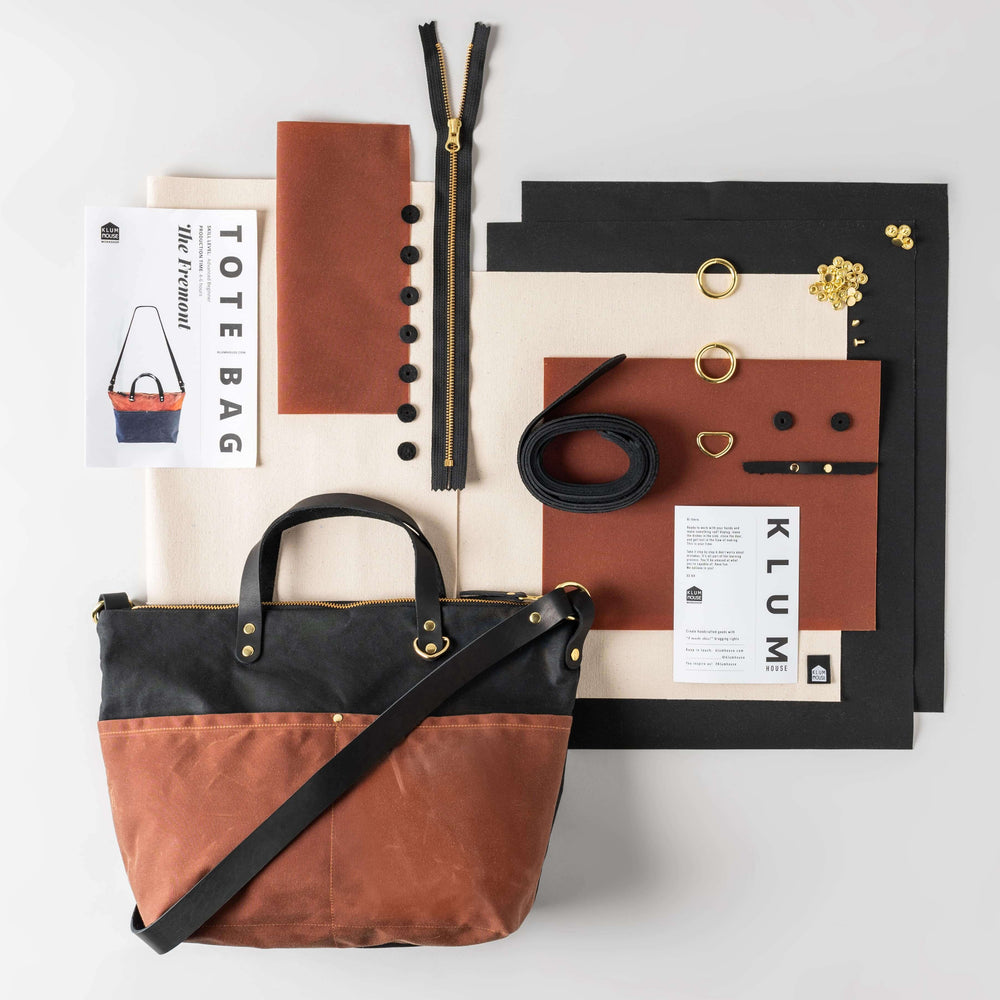
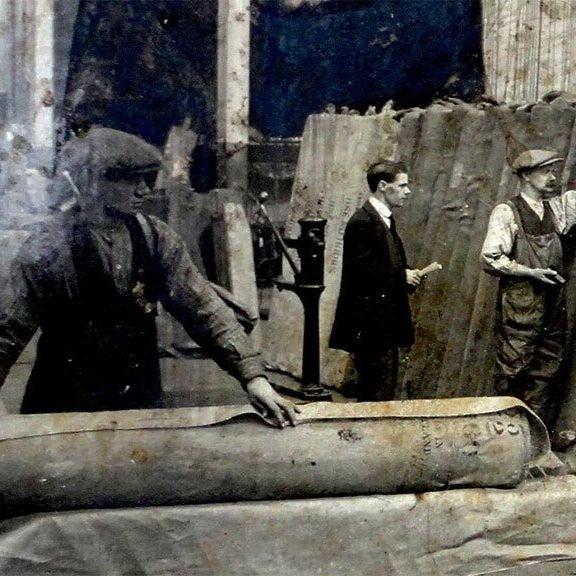
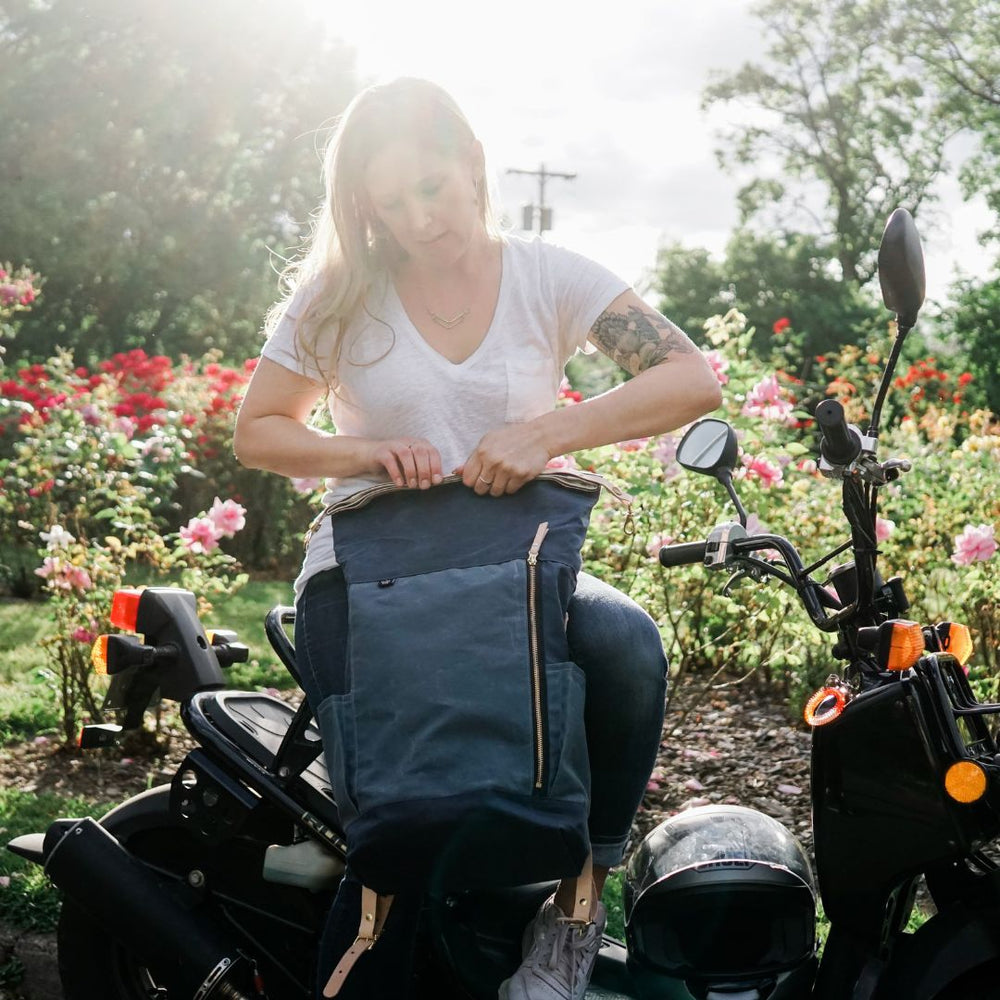
Wax & Weight
The textile's quality and strength are determined by the wax coating, and the fabric's yarn weight and weave density. It's important to take note of the weight, type of wax, and wax blend used to ensure you are purchasing the desired weight and quality for your project.
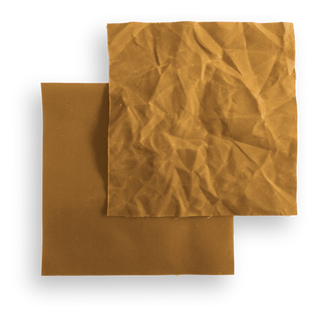
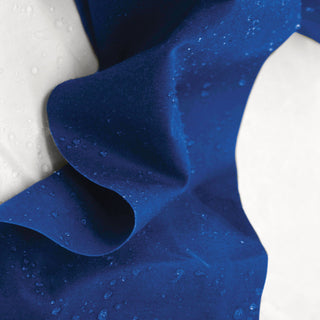
Wax Finishes
Different types of waxed canvas include oilskin dry waxed canvas, which has a drier finish (better for jackets) and traditional waxed canvas, which is shinier and great for bags. Don't confuse waxed canvas with oilcloth, which is printed vinyl with a synthetic backing, often used for tablecloths. Buying swatches first can help ensure you get the product you want.
While waxed canvas has a lot of structure, it is surprisingly flexible. It's not gummy or damp, but soft and pliable. Waxed canvas has a "memory," meaning that it records folds and creases and will hold its shape with a simple finger press. The wax has a slightly tacky feel to it and will probably make your hands feel a little waxy after working with it. Water beads on the surface, too, so your bags and jackets confer protection against the elements.
Fabric Weight
Note that the listed weight of waxed canvas is not standardized. Some companies sell the fabric as waxed weight, while others sell it as nonwaxed weight. If you have questions, contact the retailer, or see what project types the fabric is suggested for.
Working with Waxed Canvas
Right & wrong sides: Technically, waxed canvas has right and wrong sides. However, because the canvas is made with a plain weave and the wax coating is equal on both sides, the difference between the right and wrong side is almost indistinguishable, so we treat the sides interchangeably.
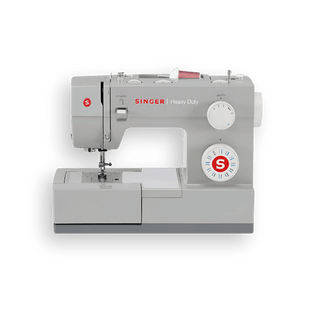
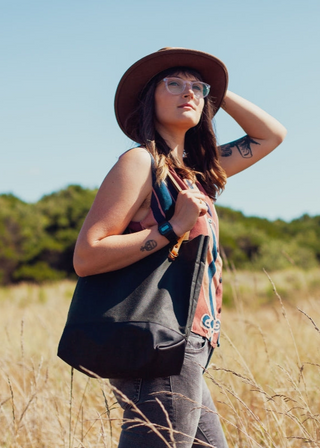
Technique Advice
Basic sewing machine: You don't need an industrial machine, nor do you need a fancy home machine. A heavy-duty machine that can feed multiple weighty fabric layers is helpful.
Stitch length: 3.0 mm for most stitching; go up to 3.5 mm in thick areas.
Seam finishes: In a rugged, unlined bag project, it's not essential to do fussy seam finishes. A simple zigzag, binding, or a French seam provides an easy and clean finish.
Reducing drag: When you're sewing through many layers of fabric, try a walking foot or a shim to move from fewer to more layers.
Pressing: The heat from an iron can melt the wax coating, so it's best to avoid ironing it. If you need to press a seam, use a bone folder, hera marker, fabric roller, or just finger-press it.
Weights, not pins: It can be tricky to pin through thick layers of canvas, and pins may leave marks in the fabric. Hold patterns in place with pattern weights. If you must pin, keep pins within the seam allowances only.
Cutting tools: Opt for a rotary cutter to ensure smooth, straight cuts.
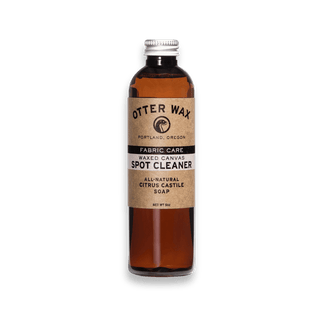
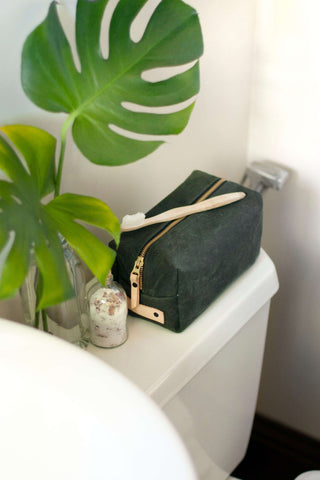
Care & Maintenance
Rewaxing: The wax coating can wear off your project over time, especially in high-friction areas. This is a natural part of the aging process of waxed canvas and adds to the fabric's character and charm. If needed, you can rewax the fabric to revive the water-resistant coating. (OtterWax.com)
Spot-clean: Waxed canvas doesn't stain easily, and the inevitable scuffs made by daily use blend into the fabric's weathered patina. However, if your waxed canvas does need cleaning, spot-clean it with a damp towel & a soap like this Waxed Canvas Spot Cleaner & never put it in the washing machine or dryer.
Cleaning wax from your machine: When sewing with waxed canvas, the feed dogs scrape wax off the fabric while it moves it through the machine. Over time, this wax builds up on the feed dogs and your needle. We've found that we can make five or six bags before the machine needs a cleaning. It's easy to clean the wax from your machine by giving the feed dogs a light scrub with a toothbrush and some isopropyl alcohol.
Suggested Sewing Supplies
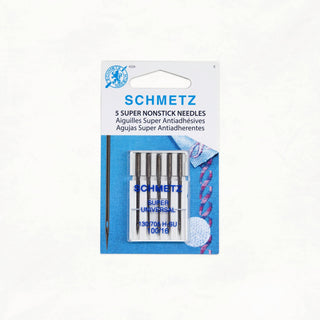
Needles
Use a sharp, heavy-duty needle (size 100/16), such as a denim needle or a nonstick needle. These needles can penetrate the fabric without breaking and resist gumming up.
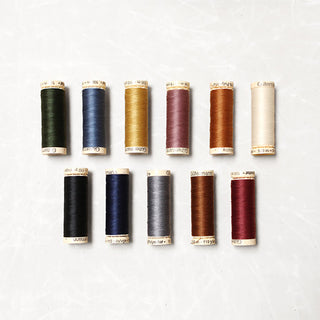
Thread
Use a strong thread, such as nylon or polyester all-purpose thread in size 40 or 50. Heavy-duty thread also works great!
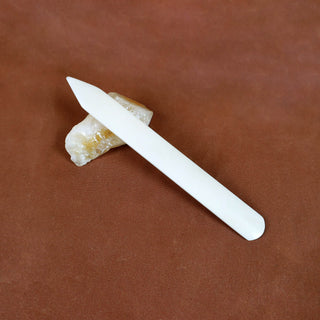
Marking
Our favorite way to mark or score waxed canvas is with a Bone Folder. Or you can use Chacopel colored pencils by Clover with a light hand.
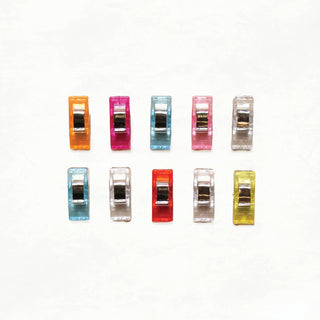
Clips
Craft clips work great for holding multiple layers of thick fabric together without creating holes. We still use flat-head pins, but those don't cut it for thick layers.
